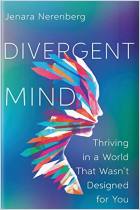加入 getAbstract 阅读摘要

加入 getAbstract 阅读摘要
Steve Silberman
NeuroTribes
The Legacy of Autism and the Future of Neurodiversity
Avery, 2016
看看什么内容?
A nuanced, compassionate overview of autism, autistic historical figures and how the perception of autism has altered over the decades.
Recommendation
Wired contributor Steve Silberman offers intimate portrayals of autistic people and a well-researched, comprehensive historical perspective on autism. This would be enough to make his book a worthwhile read, but he also leads you through a series of subtle shifts – helping you abandon long-held assumptions about autism and embrace a nuanced view of how autistic people move through the world.
Summary
About the Author
Steve Silberman, a contributor to Wired, wrote Skeleton Key: A Dictionary for Deadheads.


















Comment on this summary